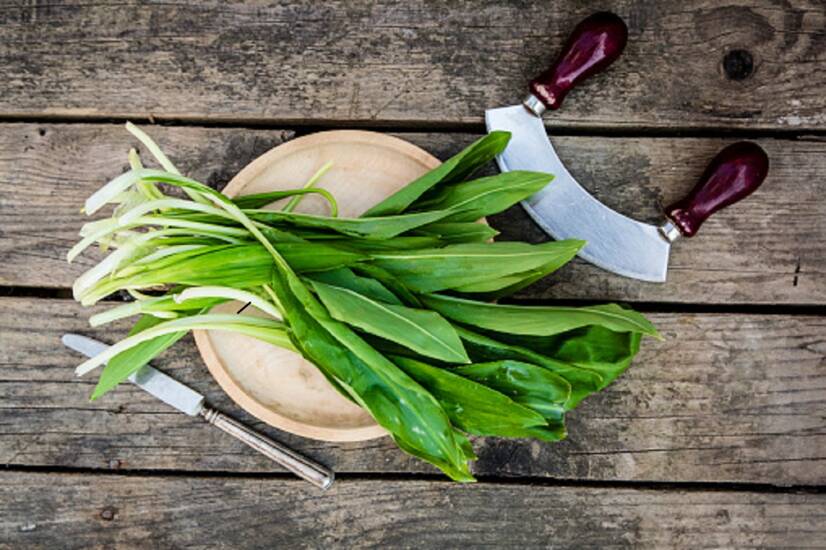- Herbarium or from alchemilla to jindava (Jaroslava Bednářová ) - characteristics and occurrence of bear garlic
- Herbarium or nature in your kitchen (Jaroslava Bednářová ) - collection, folk medicine of bear garlic
- medvedicesnak.sk - occurrence, cultivation, processing of bear garlic
Benefit from the effects of bear garlic. Where is it found and can it be grown?

Bear garlic, otherwise known as wood garlic, is a medicinal plant in the garlic family (Amaryllidaceae). It is easily found in deciduous moist forests where it forms carpet-like growths. Its strong scent brings us to the right place.
Characteristics
Bear garlic finds a place in our household thanks to its positive effects on health.
You often ask:
Where and when is it found?
Can it be grown at home?
Another common question is whether it can be stored by freezing. The answers to these questions and much more can be found in the article.
Bear garlic, otherwise known as Allium ursinum, is a bulbous plant. It is hardy and grows to a height of 20 to 40 cm. It flowers from April to June.
It is a monocotyledonous plant that reproduces by seeds and bulbs. It is a wild "relative" of the onion. It is originally native to Europe and Asia.
The plant produces light green leaves from a single leaf base.
The elliptical leaves of bear garlic can grow up to 25 cm long and 7 cm wide.
The leaves are mostly lanceolate, similar to those of the fragrant lily of the valley (Convallaria majalis).
The flower is a cluster of six to 20 white flowers. The flowers lack the bulbs produced by some other species, such as Allium vineale and Allium oleraceum. The flower is usually 16 to 20 mm in diameter. The flower stalk is triangular in cross-section.
How do you tell bear garlic from poison lily of the valley?
Bear garlic is an edible and tasty herb, but it can easily be mistaken for the poisonous lily of the valley (Convallaria majalis) when harvested.
Basic differences between bear garlic and lily of the valley:
- Bear garlic has a strong garlic scent.
- Lily of the valley starts growing later, when the garlic flowers
Avoid picking flowering herbs at all times.
Internal use
It has a pungent smell and taste of garlic. It is comparable to kitchen garlic, which is much better for digestion because it does not irritate the stomach.
The active ingredients of bear garlic include:
- Allicin
- flavonoids
- mucilage
- vitamin B
- vitamin C
- minerals (sodium, potassium, calcium, magnesium)
Nutritional values of bear garlic
| Energy value | 80 KJ |
| Protein | 0,9 g |
| Carbohydrates | 3 g |
| Fats | 0,3 g |
| Fibre | 2 g |
Fresh garlic leaves are best for consumption.
The world-famous Marie Treben often promotes the beneficial properties of bear garlic. During April, it is advisable to consume it in all its forms so that the spring cleansing treatment has the right effects.
It can also help with stomach problems such as constipation, flatulence or chronic diarrhea.
It can also be consumed for cardiovascular diseases. Bear garlic can also be included in the spring diet for high blood pressure problems.
Consumption of bear garlic is very useful for painful varicose veins.
Bear garlic also helps with frequent migraines or headaches.
It can be used for respiratory ailments such as bronchial asthma or bronchitis.
It strengthens the immune system in spring, when temperature conditions change and the body is weakened. Man is very susceptible to various diseases during this period.
Bear garlic, thanks to its distinctive spicy taste, will effectively help to expel nematodes from the human body.
Harvesting and storage
Bear garlic is harvested during the growing season, from April to June. Before the trees leaf out, the plant sets buds, flowers and produces fruit, and the above-ground part of the plant dies. Bear garlic is abundant in some locations and rare in others, so harvest carefully and sparingly.
In summer, we would look for bear garlic in vain.
To use bear garlic, it is advisable that it is fresh. It loses some of its active substances by drying.
The preparation of the tincture is best when it is stored for a long time.
Read also.
Because it is a seasonal herb, we can process it in many ways. We can store it in the freezer, use it in cooking, baking or even make a tasty cold dish from it that retains all its vitamins.
Bear garlic is very easy to spot in nature because the whole plant smells strongly.
By making a pesto, we can extend its season, as it can last up to a month if stored well in the fridge.
Protected areas should be avoided when harvesting.
Occurrence of bear garlic
It occurs in European countries, but in the east it is found only in the Caucasus region.
Bear garlic prefers moist soils and is found in floodplain and deciduous forests, along streams and at the foot of slopes.
It is also enjoyed by the inhabitants of the United Kingdom, southern Scandinavia and parts of Russia.
How to find bear garlic in the forest?
It is not at all difficult to find in the forest. It is abundant and covers large areas that look like a green carpet. Its typical garlic smell gives it away as it spreads throughout the forest.
Folk medicine
Bear garlic is one of the early spring herbs. Thanks to its fragrance, it was used to jump-start the body after the winter period. It contains valuable vitamins and minerals, provides the body with disinfection of the digestive system and increases the appetite.
Bear garlic is especially recommended for:
- lowering blood pressure
- digestive disorders
- atherosclerosis
- lowering blood sugar levels
- strengthening the immune system
Its effectiveness as a natural antibiotic helps in the elimination of bacteria, intestinal parasites and fungi. Overall, bear garlic helps in metabolism and rejuvenation of the body.
Bear garlic and its cultivation
It is propagated by seeds or bulbs.
When grown from seed, the ideal time for planting is from October to March directly in the garden.
When propagated by bulbs, it is planted in late summer in August or September when the garlic has flowered.
It prefers a shady area near shrubs and trees.
It should not be planted where bulbs were previously grown. Care should be taken with bear garlic as it is not very demanding.
Caution not only for allergy sufferers
The essential oils of bear garlic can cause an allergic reaction which, when consumed, results in a swollen throat and breathing difficulties. The juice contained in the plant can cause irritation and redness of the skin.
Excessive use of garlic can cause diarrhoea and bloating, and even kidney inflammation.
Interesting resources










